Observe the esterification mechanisms for primary and teriary alcohols.
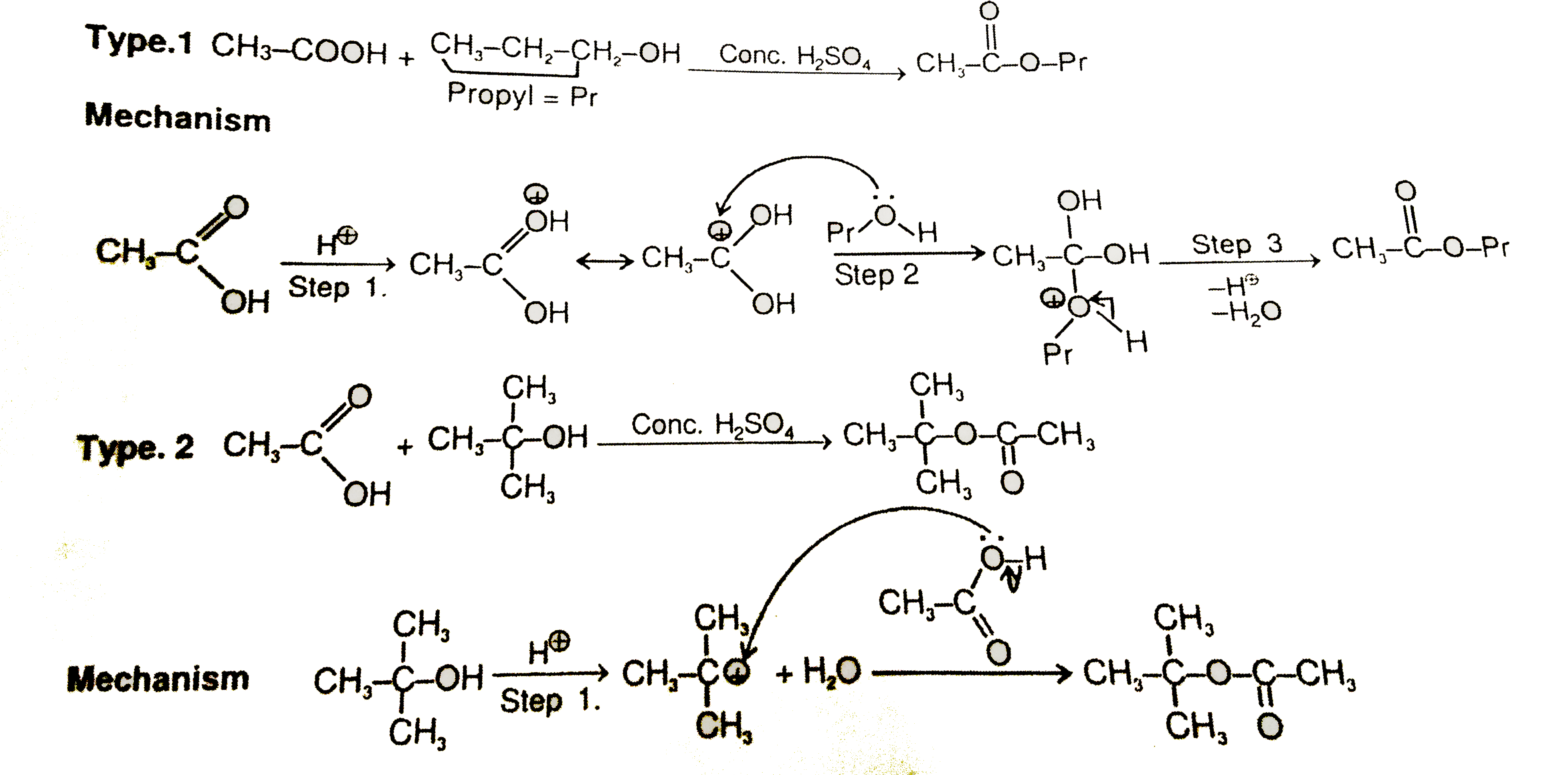
(+) Octan -2-ol esterifies with Acetic acid to give optically inactive racemised product. It must have gone by
Type I mechanism
Type II mechanism
Mix type I and type II mechanism
more by type I and less by type II mechanism
The correct Answer is:B
Since (+) Octan -2-ol racemises on reaction with acetic acid, therefore it must have gone through an SN1 reaction i.e., type II reaction
Topper's Solved these Questions
- CARBONYL COMPOUNDS (ALDEHYDES & KETONES ) & CARBOXYLIC ACID BOOK - RESONANCECHAPTER - CARBONYL COMPOUNDS (ALDEHYDES & KETONES ) & CARBOXYLIC ACID EXERCISE - Part -IV
23 Videos
- CARBONYL COMPOUNDS (ALDEHYDES & KETONES ) & CARBOXYLIC ACID BOOK - RESONANCECHAPTER - CARBONYL COMPOUNDS (ALDEHYDES & KETONES ) & CARBOXYLIC ACID EXERCISE - Part -II
38 Videos
- BIOMOLECULES & POLYMERBOOK - RESONANCECHAPTER - BIOMOLECULES & POLYMEREXERCISE - ORGANIC CHEMISTRY(Biomolecules & Polymer)
33 Videos
- CHEMICAL KINETICSBOOK - RESONANCECHAPTER - CHEMICAL KINETICSEXERCISE - PHYSICAL CHEMITRY (CHEMICAL KNIETICS & RADIOACTIVITY)
49 Videos
Similar Questions
Observe the esterification mechanisms for primary and teriary alcohols.
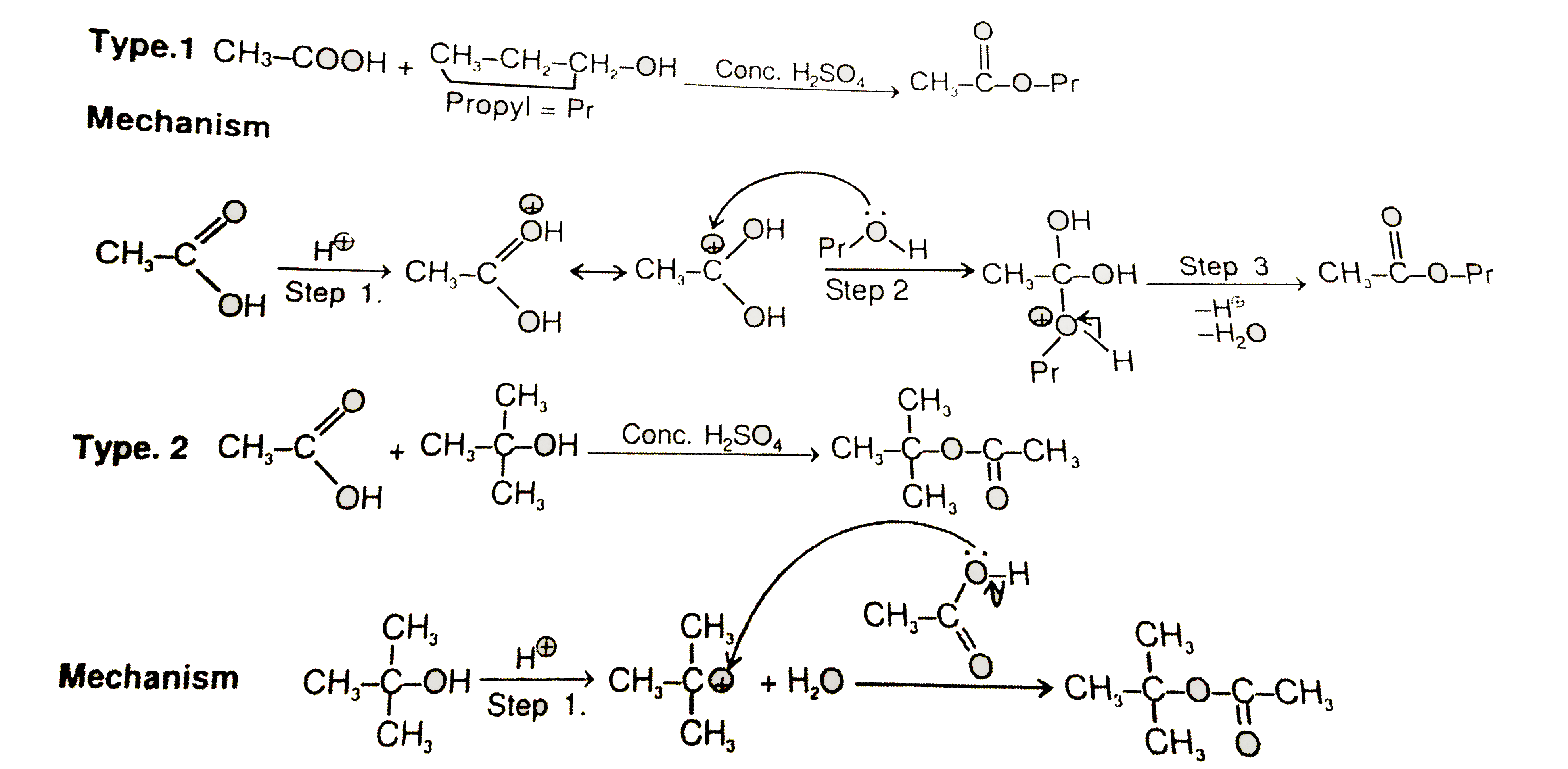
CH3−COOH+C2H518OHConc.H2SO4−−−−−−−→(P)
CH3−COOH+(CH3)3C−18OHConc.H2SO4−−−−−−−→(Q)
In the above reaction (P) and (Q) are respectively
View SolutionAn optically active compound [A] C5H13N reacts with alkaline CHCl3 to give an optically active, compound [B]. [A] also reacts with nitrous acid to give an optically inactive alcohol [C] C5H11OH as the major product. What would be the structure of [A]?
View Solution
Knowledge Check
Observe the esterfication mechanisms for primary and tertiary alcohols.
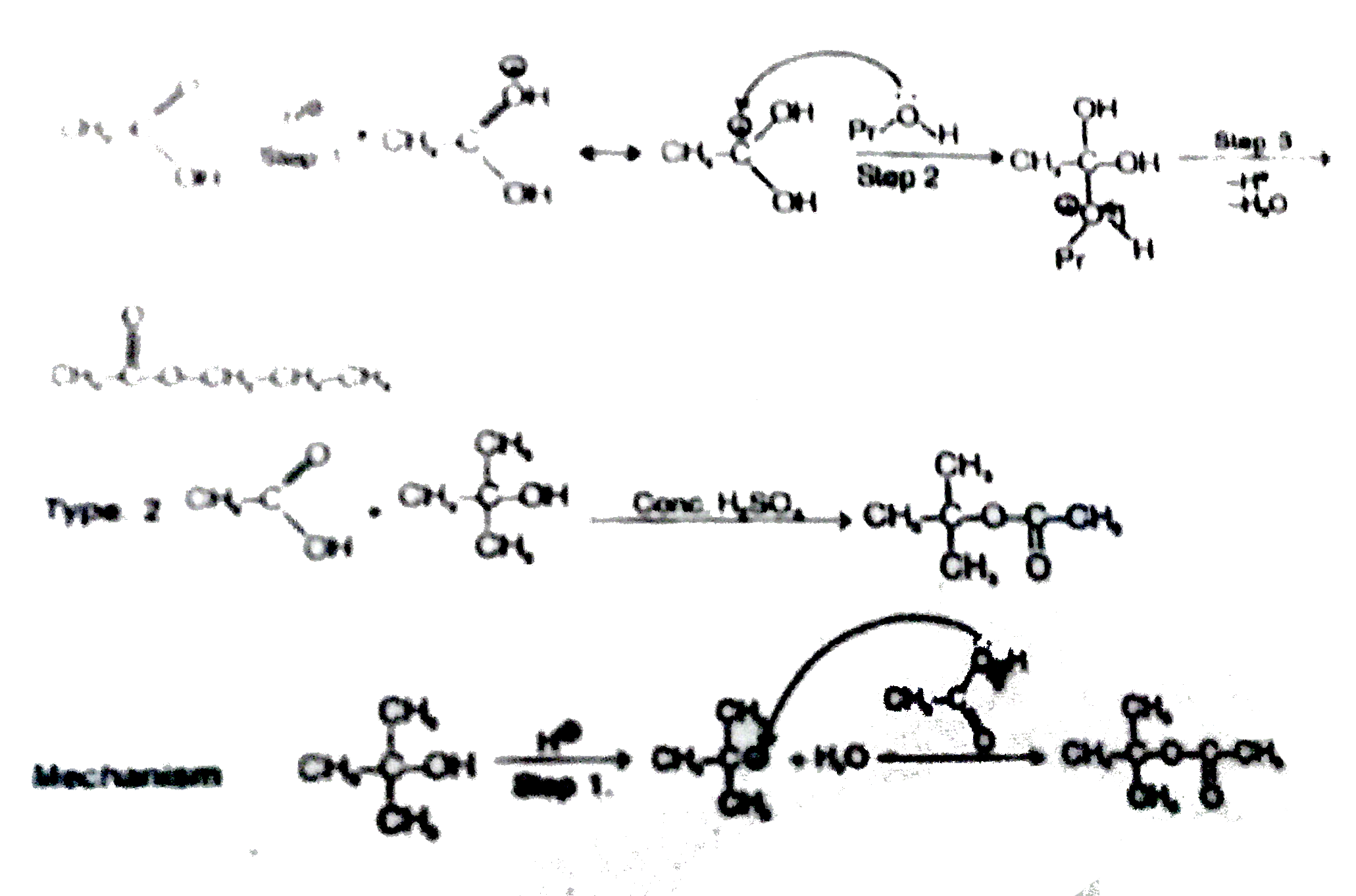
(+) Octan-2-ol esterifies with Acetic acid to give optically inactive recemised product.It must have gone byAType I mechanismBType II mechanismCMix type I and type II mechanismDMore by type I and less by type II mechanismObserve the esterification mechanisms for primary and teriary alcohols.

CH3−COOH+C2H518OHConc.H2SO4−−−−−−−→(P)
CH3−COOH+(CH3)3C−18OHConc.H2SO4−−−−−−−→(Q)
In the above reaction (P) and (Q) are respectivelyACH3−O∣∣C−O−C2H5,CH3−O∣∣C−18O−CH3∣CH∣CH33−CH3BCH3−O∣∣C−18O−C2H5,CH3−O∣∣C−O−C∣CH3∣CH3−CH3CC2H5−O∣∣C−18O−CH3,CH3−O∣∣C−O−CH3∣C∣CH3−CH3DCH3−O∣∣C−18O−C2H5,CH3−O∣∣C−18O−CH3∣C∣CH3−CH3An optically active compound [A] C5H13N reacts with alkaline CHCl3 to give an optically active, compound [B]. [A] also reacts with nitrous acid to give an optically inactive alcohol [C] C5H11OH as the major product. What would be the structure of [A]?
A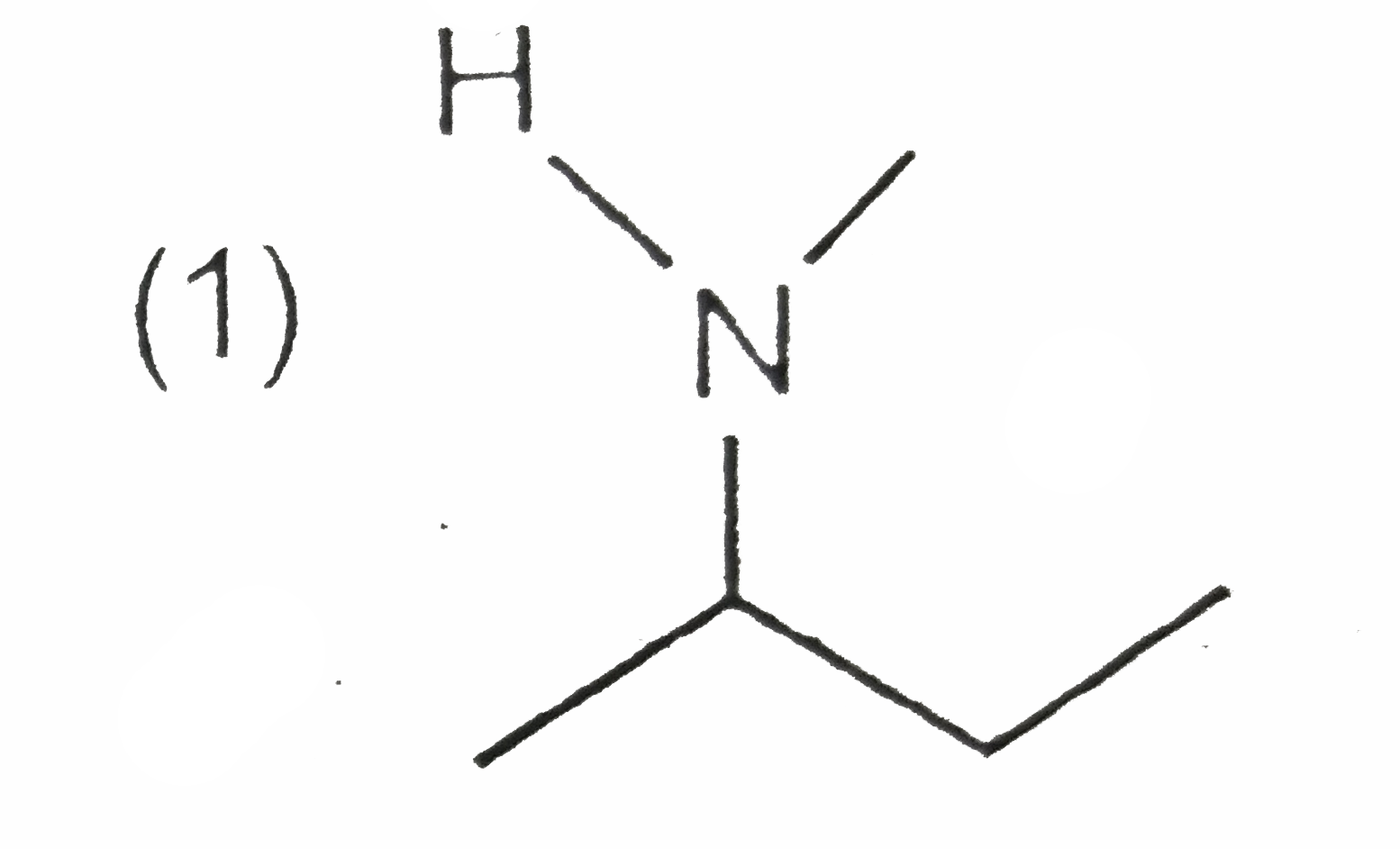 B
B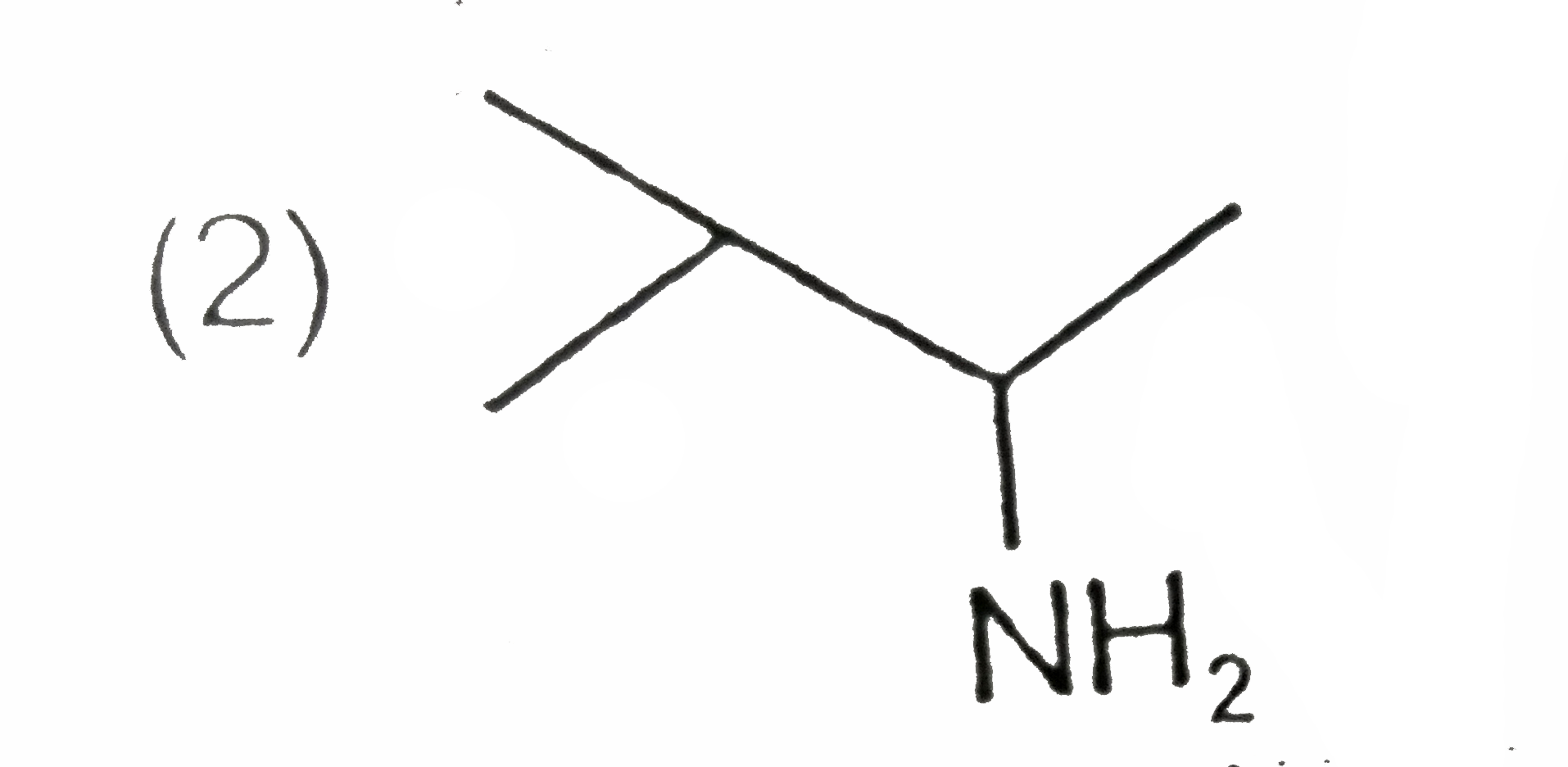 C
C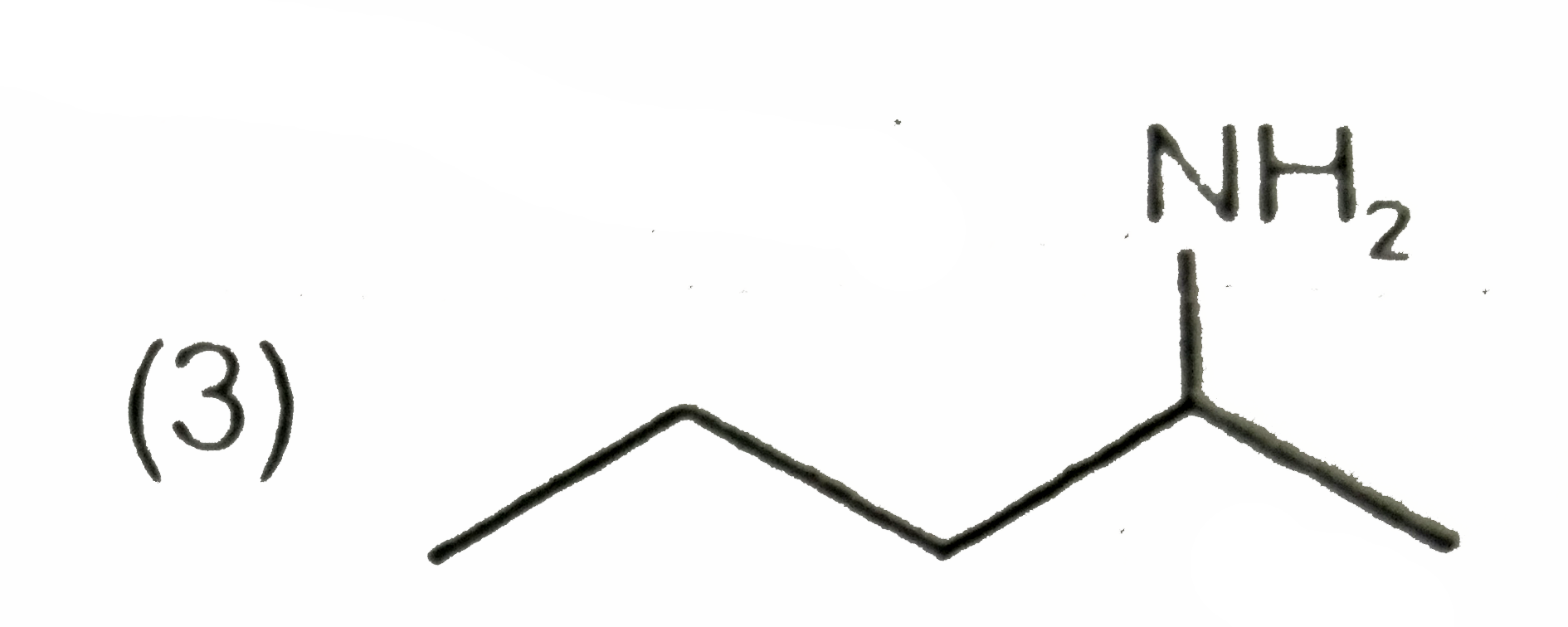 D
D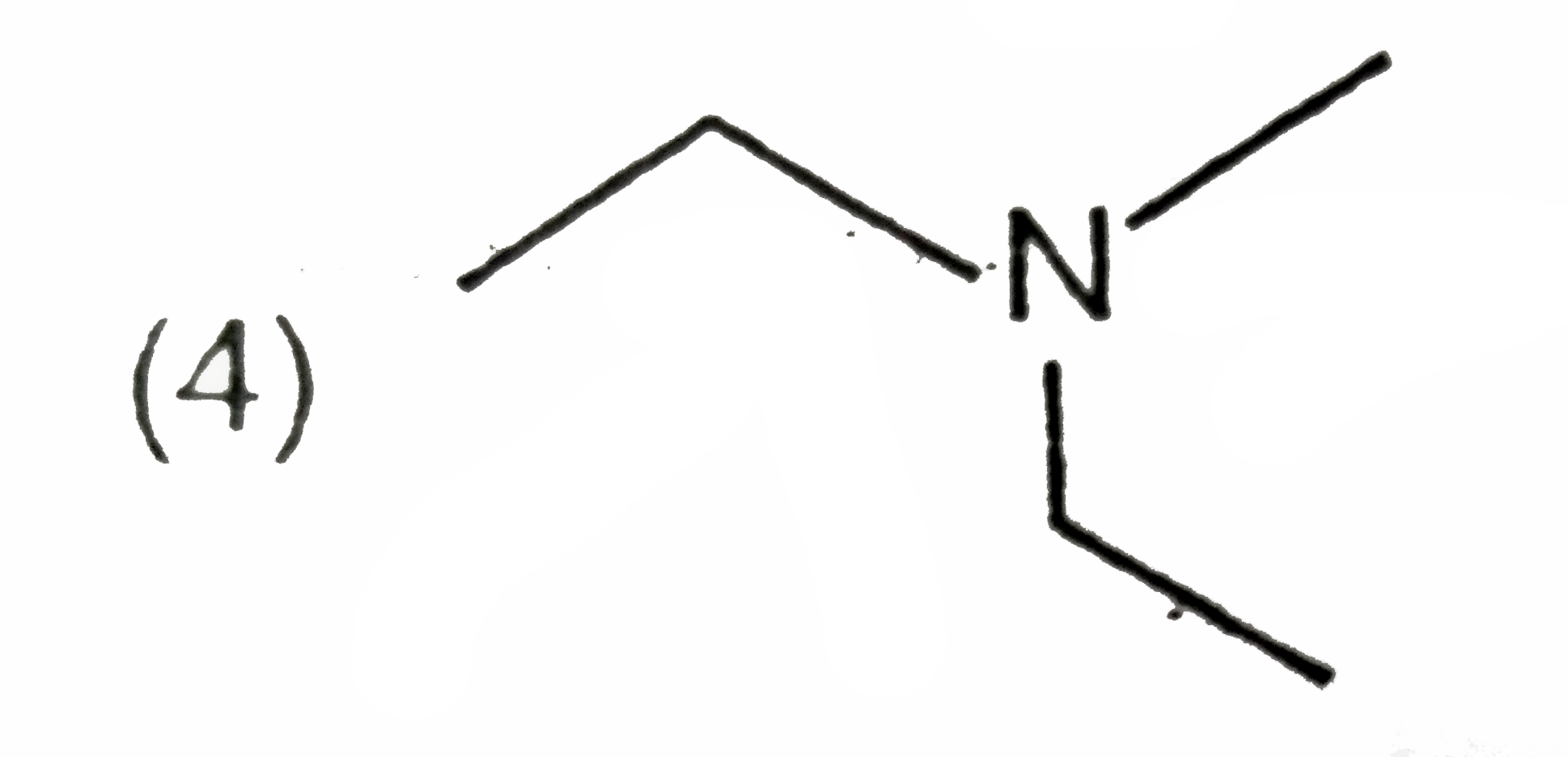
Read the given passage and answer questions follow:
The hydroxyl group of an alcohol is replaced by halogen on reaction with concentrated halogen acids, phosphorus halides or thionyl chloride. Thionyl chloride is preferred because in this reaction alkyl halide is formed along with gases SO2 and HCl. The two gaseous products are escapable, hence, the reaction gives pure alkyl halides. The reactions of primary and secondary alcohols with HCl require the presence of a catalyst, ZnCl2. With tertiary alcohols, the reaction is conducted by simply shaking the alcohol with concentrated HCl at room temperature. Constant boiling with HBr (48%) is used for preparing alkyl bromide. Good yields of R- I may be obtained by heating alcohols with sodium or potassium iodide in 95%orthophosphoric acid. The order of reactivity of alcohols with a given haloacid is 3∘>2∘>1∘ . Phosphorus tribromide and triiodide are usually generated in situ (produced in the reaction mixture) by the reaction of red phosphorus with bromine and iodine respectively.
Give the reactivity order of alcohols in halogenation using a haloacid.
View SolutionRead the given passage and answer questions follow:
The hydroxyl group of an alcohol is replaced by halogen on reaction with concentrated halogen acids, phosphorus halides or thionyl chloride. Thionyl chloride is preferred because in this reaction alkyl halide is formed along with gases SO2 and HCl. The two gaseous products are escapable, hence, the reaction gives pure alkyl halides. The reactions of primary and secondary alcohols with HCl require the presence of a catalyst, ZnCl2. With tertiary alcohols, the reaction is conducted by simply shaking the alcohol with concentrated HCl at room temperature. Constant boiling with HBr (48%) is used for preparing alkyl bromide. Good yields of R- I may be obtained by heating alcohols with sodium or potassium iodide in 95%orthophosphoric acid. The order of reactivity of alcohols with a given haloacid is 3∘>2∘>1∘ . Phosphorus tribromide and triiodide are usually generated in situ (produced in the reaction mixture) by the reaction of red phosphorus with bromine and iodine respectively.
How are PBr3 and PI3 prepared for halogenating the hydroxyl group of alcohols ?
View SolutionDiane diol worked for several days to prepare compounds shown. She labelled and slept. When she got up all lables had slipped. Her friend Glycol said that They could be easily distuingished by two experiments. Which of the m were optically active.
How many products were obtained when each is treated with periodic acid. after experimentation Diane found the following results
1. Compounds A, E, F were optically active and B, C and D were optically inactive.
2. one product was obtained from the reaction of A, B and D with periodic acid.
3. Two products were obtained from the reaction of F with periodic acid.
4. C and E didnt react with periodic acid.
The structure of the compounds were

Answer the following based on the above observations,
On the basis of the observation which compounds cannot be distinguished ?
View SolutionDiane diol worked for several days to prepare compounds shown. She labelled and slept. When she got up all lables had slipped. Her friend Glycol said that They could be easily distuingished by two experiments. Which of the m were optically active.
How many products were obtained when each is treated with periodic acid. after experimentation Diane found the following results
1. Compounds A, E, F were optically active and B, C and D were optically inactive.
2. one product was obtained from the reaction of A, B and D with periodic acid.
3. Two products were obtained from the reaction of F with periodic acid.
4. C and E didnt react with periodic acid.
The structure of the compounds were

Answer the following based on the above observations,
Which structure could be suggested for A
View SolutionDiane diol worked for several days to prepare compounds shown. She labelled and slept. When she got up all lables had slipped. Her friend Glycol said that They could be easily distuingished by two experiments. Which of the m were optically active.
How many products were obtained when each is treated with periodic acid. after experimentation Diane found the following results
1. Compounds A, E, F were optically active and B, C and D were optically inactive.
2. one product was obtained from the reaction of A, B and D with periodic acid.
3. Two products were obtained from the reaction of F with periodic acid.
4. C and E didnt react with periodic acid.
The structure of the compounds were

Answer the following based on the above observations,
Which structure could be compound F
View Solution
